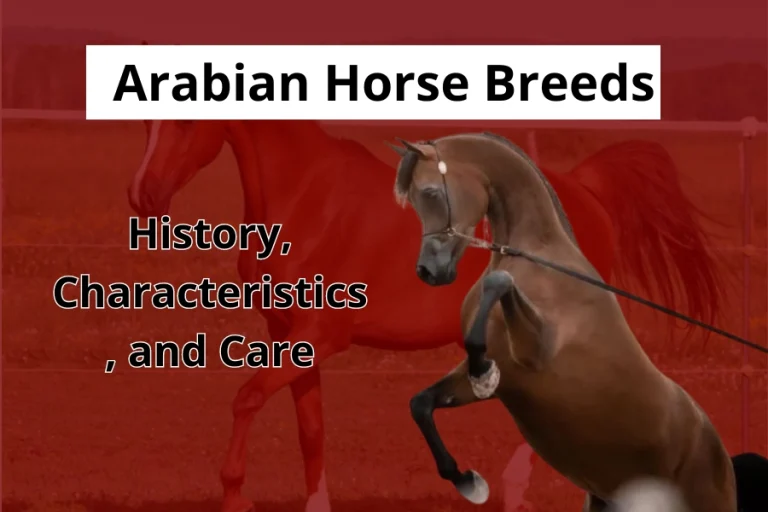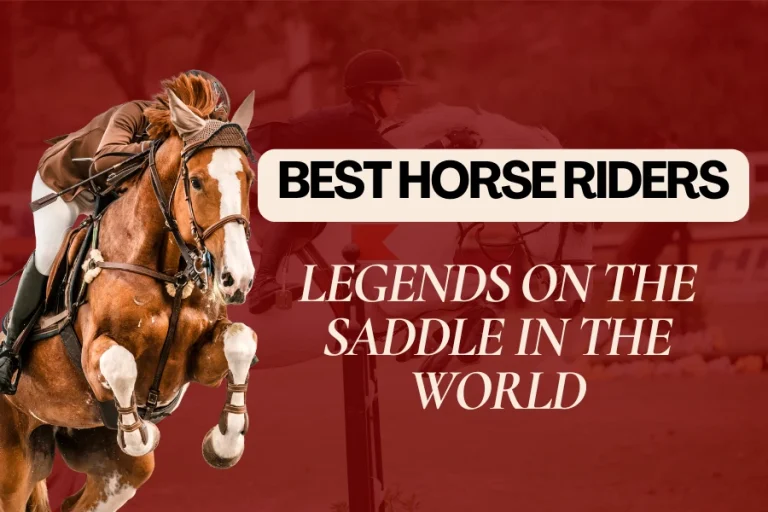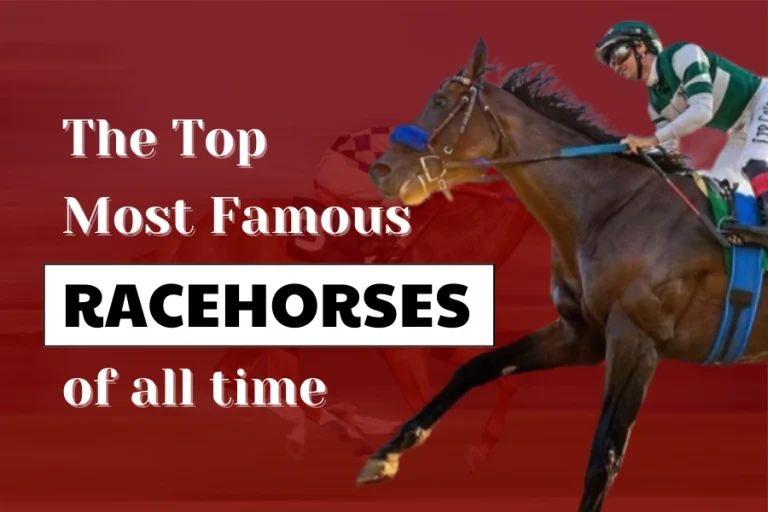7 The Rarest Horse Breeds: The Endangered Equines
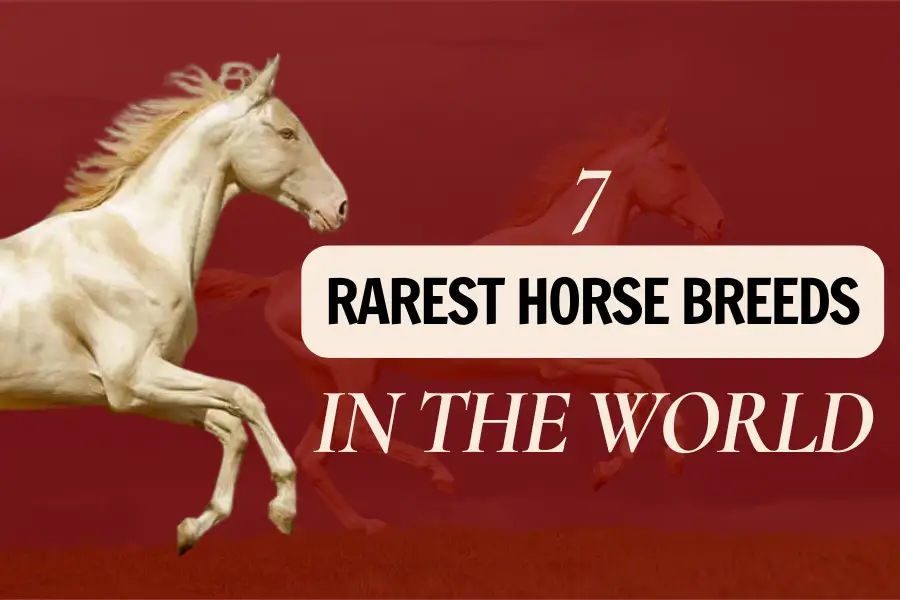
Horses have been companions and workers for humans for centuries. Each breed of horse has its own beauty and many are gradually becoming popular to the public in general and equestrians in particular. However, due to the impact of the surrounding environment such as climate change, the development of machinery, war, etc., a number of horses are gradually wiping out and are considered as rare horse breeds and need to preserve their genetic diversity as well as cultural heritage. Therefore, in this article, we will take a look at some horses to know more about some rarest horse breeds.
1. Akal-Teke

Origin: Turkmenistan
Height: 14.3 to 16 hands
The Akhal Teke is one of the oldest horse breeds still in existence today. In Turkmenistan – its origin, Akhal Teke horse is the national symbol. Therefore, this breed has a very long history which first originated from Central Asia and became famous for its many contributions to history. This rare breed of horse has only a few hundred individuals left in the world, it has entered the legend with its metallic coat color, blood-red sweat. The Akhal-Teke is considered the rarest horse breed in the world with its metallic coat, wild endurance, and extremely fast gallop. However, in nature, Akhal Teke horses not only have metallic coat colors, but also have other common coat colors such as:
- Bay
- Black
- Buckskin
- Chestnut
- Cream
- Cremello
- Gray
- Perlino
- Palomino
Akhal Teke is a hot-blooded horse breed. It not only has an extremely attractive appearance but also has special athletic abilities. The Akhal Teke breed possesses an elegant conformation and long, strong lines.
The Akhal Teke is smart, loyal and extremely energetic. Like other hot blood horses, it requires regular exercise and activity, if not, it will have many behavioral problems due to over excess energy. Due to a loyal breed, Akhal Teke seems a “one horse, one owner” horse and is suitable for only the best rider.
The Akhal Teke is the expensive breed of choice for endurance racing. In terms of speed, the Akhal Teke is probably slower than Thoroughbred horses, but it is still a popular racehorse in many countries. Today, many Akhal Teke racers have won in amateur show riding, triathlons, and jumping competitions.
2. American Cream Draft Horse
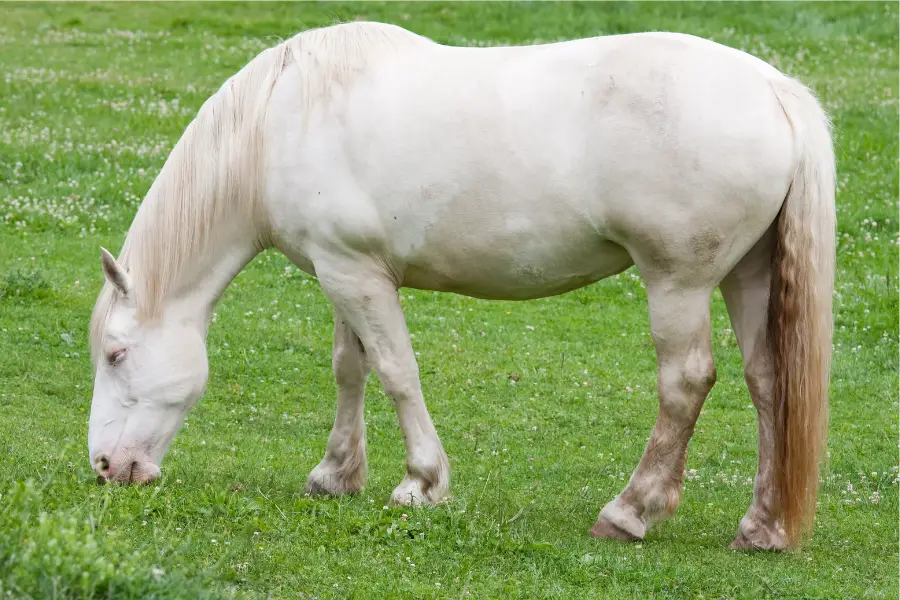
Origin: Iowa, United States
Height: 16 to 16.3 hands
The population of American Cream Draft horse breed is over 500 individuals – the estimated highest number until now. However, this number is still more modest than other horse breeds; so, this kind of horse is rare.
One of the most special conformation is the coat color: cream and white color with many shades from light to dark on pink skin, with white tail and mane, amber or hazel eyes. These rare horses are muscular, large and strong bodies. Moreover, their chests are broad with strong hindquarters and strong legs so that is the reason why they are one of the strongest horses to be chosen to be draft horses.
The American Cream Draft horse is famous for its gentle temperament and versatile strength. This rare horse breed is also an icon of agricultural legacy in the United States.
The American Dream Draft horse is always eager to please its owner. Therefore, this breed becomes a delightful companion when working in the fields, on the trails or in training sessions. This breed has an extremely close relationship with horse owners and always has a strong will to learn. This makes them well adapted to many different tasks and environments.
In addition, American Cream Draft horse breeds are docile, patient and calm, which makes them ideal for people of all experience levels, including beginners and children. During training, these horses learn and respond to new knowledge and respond very quickly, with a positive attitude. Thanks to its intelligence and calm, The American Dream Draft horse is a popular horse choice for many fields such as farming, logging to riding, and driving.
3. Black Forest Horse
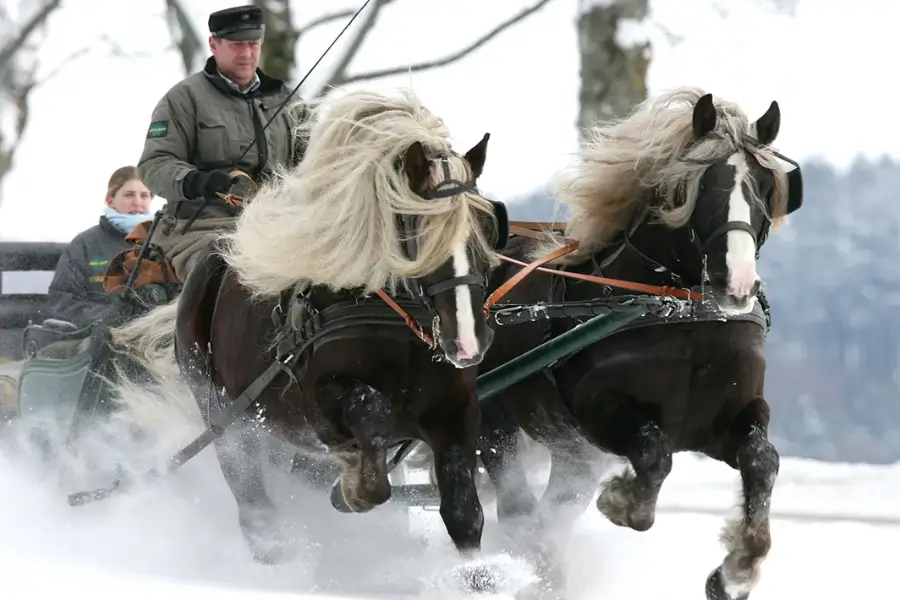
Origin: Black Forest, Germany
Height: 14.3 to 15.2 hands
The Black Forest Horse is named after its origin – the Black Forest in the Baden-Wurttemberg region of Germany. This rare horse breed is carefully bred and preserved. In 1981, the number of Black Forest Horses was greatly reduced due to the decrease in the need for horses and the use of machinery and other means of transport. Today, there are approximately 700 registered Black Forest Horse mares. The Marbach stud in Germany attempts to preserve this rare horse breed.
This Black Forest Horse has a chestnut coat with a flaxen mane and tail. The coat also comes in a variety of shades and some have almost black coats.
The Black Forest Horse is primarily used for drafting, and also to be ridden. When these horses compete, judges will choose horses that show their elegance and grace in every step and movement. Besides beautiful movements, the rare horses have docile nature so they are suitable for various riders.
4. Canadian Horse
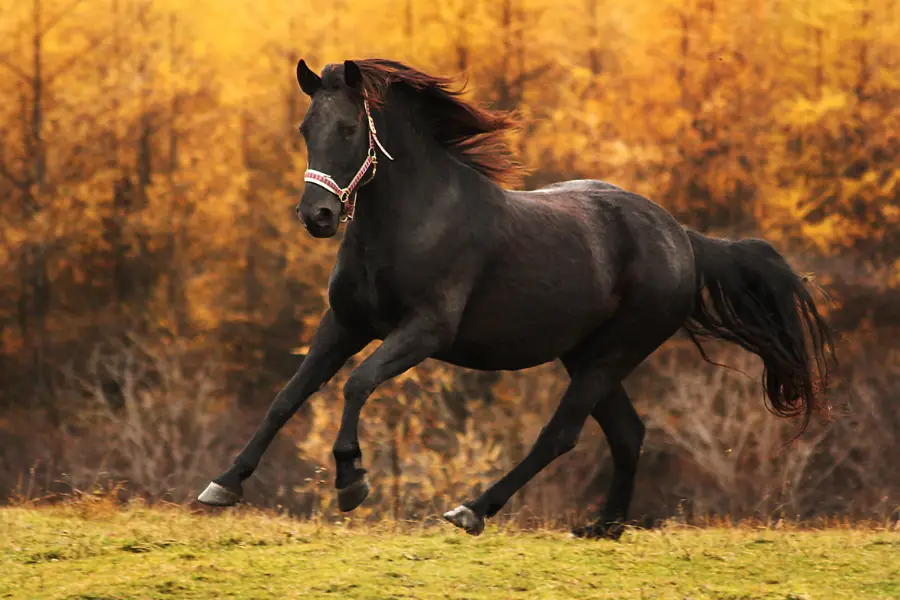
Origin: Canada
Height: 14 and 16 hands
The Canadian horse or known as Cheval Canadien is the official Canadian national horse generally and a symbol horse breed from Quebec particularly. It is also called the Little Iron Horse because this kind of horse has a small body but robust health. This breed is a common recreational equine in America and Canada.
The heritage horse breed of Quebec is a beautiful breed which existed more than 350 years since when King Louis XIV of France sent the breed to New France (Canada now) in 1665. And present Canadian horses are the result of crossbreed from diverse horse breeds. According to the research, the Canadian horse shares blood with the Belgian draft horses, Dales Pony and Percheron. Additionally, this breed may have also been affected by Shire horses and Clydesdale horses during its development.
However, after the US Civil War, these fighting horses nearly disappeared and are hard to repopulate now. There are recently approximately 6,000 Canadian horses registered around the world, but this rare breed is endangered as only 150-500 new horses are registered each year.
With the Canadian horse breed, all colors of coat and white markings are accepted. Most Canadian horses are bay, brown and about 70% of registered horses are black.
Canadian horses are calm and have good adaptability. They are also intelligent horses, easy to train and learn new things quickly, but get bored quickly if they have to do repetitive work. If these horses get the right training, Canadian horses are standard for family use. Because their average height is suitable for children to mount, and strong enough for adults to ride. Furthermore, Canadian horses can also be used for low-level dressage. And they are also suitable for many other popular sports such as driving, endurance riding, trail riding and western riding.
5. Cleveland Bay
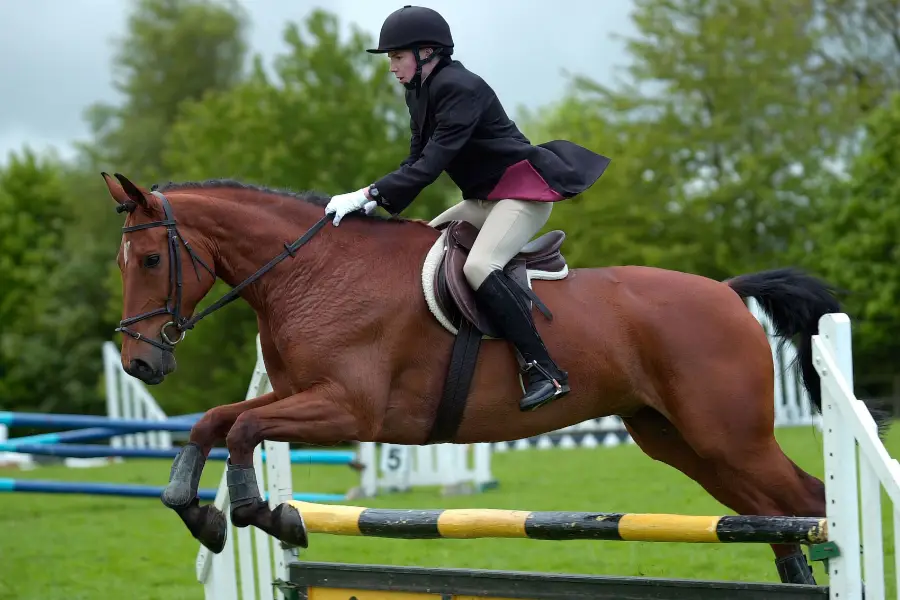
Origin: England
Height: 16 to 16.2 hands
The Cleveland Bay is an extremely rare horse breed; only 500 to 800 individuals exist today. This kind of mount is usually crossbred with Thoroughbreds to produce strong and athletic colt horses or filly horses.
This breed also has the best characteristics of the other warmblood breeds; therefore, Cleveland Bay are really good at English sports for horses such as dressage, hunting and show jumping. Nowadays, Cleveland Bays work in the Royal Mews with the purpose of pulling the royal in big ceremonies.
The Cleveland Bay has a chestnut coat with a lot of black spots. These horses come in a variety of chestnut colors including light chestnut, dark chestnut, and pale chestnut. Some Cleveland Bays may have a small white star on their forehead.
6. Dales Pony
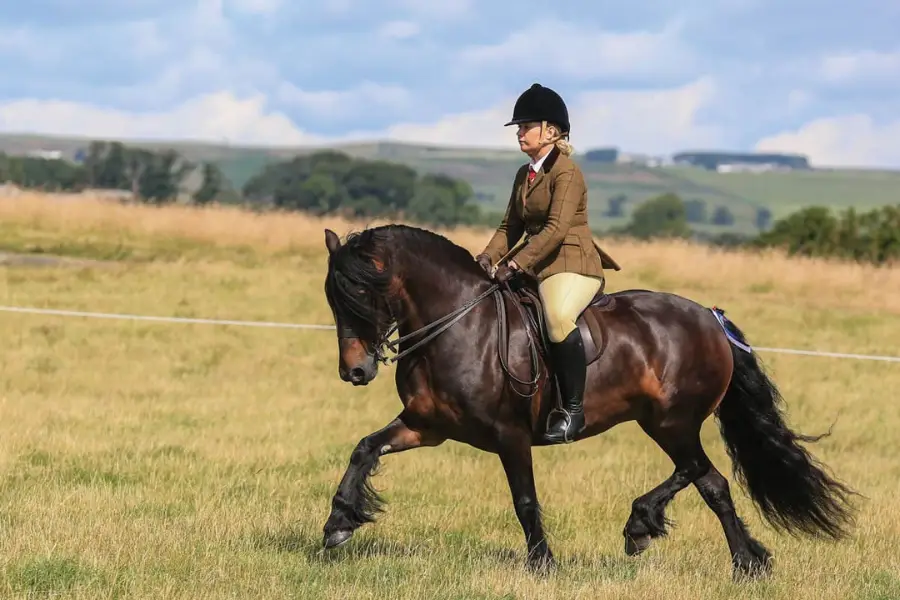
Origin: the Dales of Yorkshire, North England
Height: 14 to 14.2 hands
The Dales Pony was used for crossbreeding during World War I and II, which severely reduced the numbers of the breed. In addition, Dales Pony is one of the cob horses and had a strange genetic disease that put this breed on the brink of extinction. Thanks to current preservation efforts and the crossbreed with Fell horses, the breed is slowly recovering.
The Dale Pony was initially used to transport lead and iron ore across Britain in pack pony teams. Later, Yorkshire farmers used these horses to draft them from fells to fells to farm their cattle. As roads developed, Dale Ponies were bred to be faster, stronger to pull carriages.
Today, the Dale Pony is an ideal family horse as it is strong enough to carry adults and children. With their fearless nature when it comes to tackling remote trails, Dale Ponies are the perfect choice for pony trekking in the United Kingdom.
Besides the ability to transport, draft and trek, Dale Pony can also participate in other popular sports such as:
- Dressage
- Driving
- Endurance
- Eventing
- Fox hunting
- Jumping
- Showing
Most of the Dale Ponies has black coat, and still possess other coat colors like:
- Bay
- Brown
- Grey
- Roan
7. Norwegian Fjord Horse
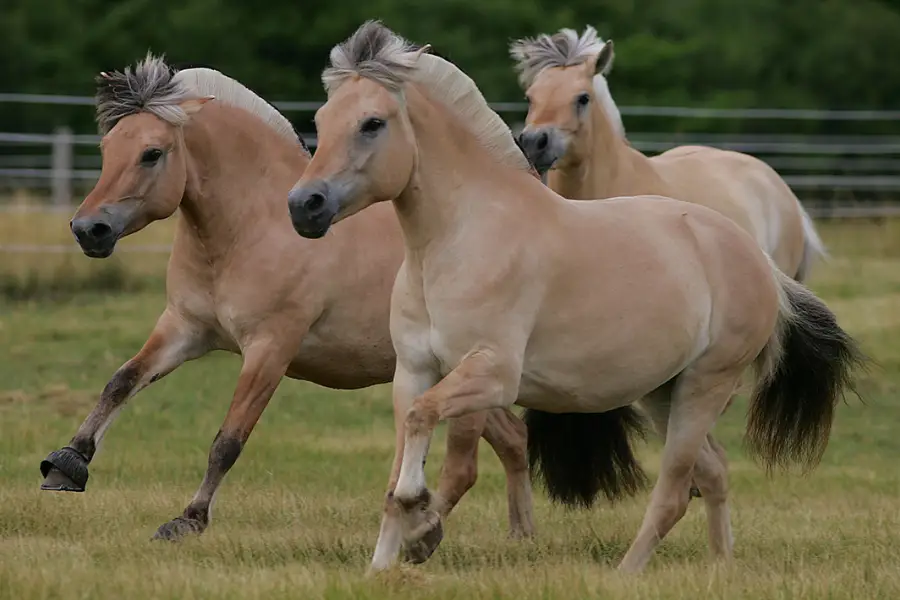
Origin: Norway
Height: 13.2 and 14.2 hands
The Norwegian Fjord is one of oldest and smallest horse breeds in the world. Like the Dales Pony, Fjord is also a cob horse. These Norwegian horses look similar to the wild Przewalski’s horse, but they do not share ancestors. The Fjord was once a warhorse for the Vikings. After migrating to western Norway, they were used for farm work.
All of the Fjord horses have dun coats because of the dilution gene. In addition, its coat color also has other dun shades such as: gray dun, red dun, white dun and yellow dun.
Thanks to its gentleness and modest size, Fjord is a good breed for beginners and standard horses for therapeutic riding programs. Despite a friendly breed, Fjord horses still need training to ensure safety when used. In addition, these horses also have an energetic and graceful gait, which make them pleasure horses. Some other appropriate sports for Fjord are rodeos, show riding, trail riding and western show.
Last Word From Raxin Horse
The world of rare horse breeds is a testament to the remarkable diversity and beauty of equine heritage. Each breed is a unique story with cultural traditions, environmental adaptations, and historical significance that have shaped them over time. Through their appealing conformations, great benefits, or the deep connections for centuries, rare horse breeds remind us of the extraordinary bond between humans and horses and the vital role these magnificent animals play in our world.

